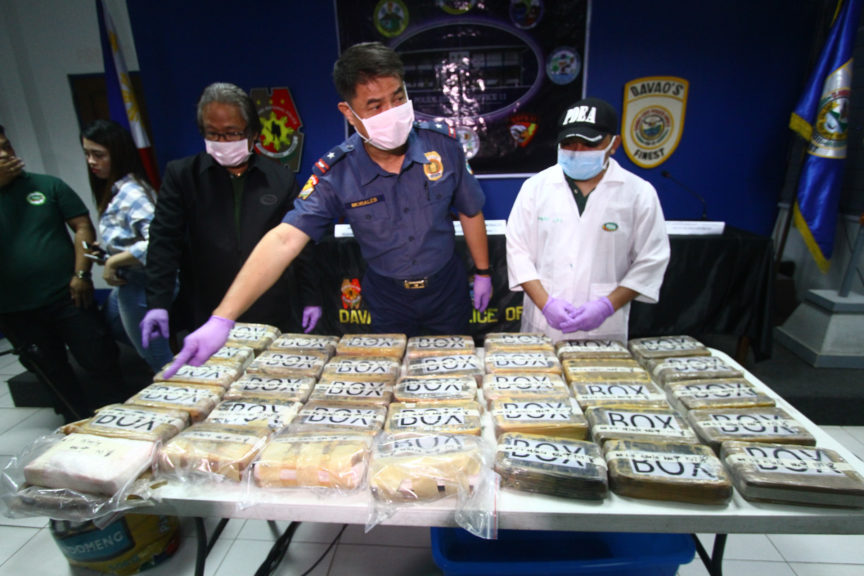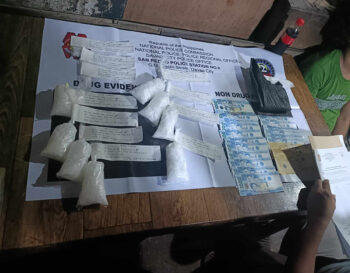DAVAO CITY (MindaNews / 27 Feb) – The 39 bricks of cocaine worth P215 million recovered off the coast of Barangay Santiago in Caraga town, Davao Oriental last Sunday will be destroyed this week, according to the Philippine Drugs Enforcement Agency (PDEA) 11.
 Police Regional Office 11 Regional Director Chief Supt. Marcelo Morales presents to media in Davao City on Monday (25 February 2019) 36 bricks of cocaine worth P200 million recovered in the coastal area of Caraga, Davao Oriental on Sunday. Mindanews Photo
Police Regional Office 11 Regional Director Chief Supt. Marcelo Morales presents to media in Davao City on Monday (25 February 2019) 36 bricks of cocaine worth P200 million recovered in the coastal area of Caraga, Davao Oriental on Sunday. Mindanews Photo
PDEA-11director Antonio E. Rivera said in an interview at the sidelines of the AFP-PNP press briefing on Wednesday here that they are still waiting for the go signal from PDEA director general Aaron N. Aquino as to the exact day when to destroy the recovered illegal drugs.
Authorities are still investigating the individuals behind the dumping of the cocaine off the shores of Caraga and how they ended up on the shores, Rivera added.
Several bricks of floating cocaine were also recovered in Surigao del Sur and Aurora last Sunday.
Commodore Roy Echeverria, of the Philippine Coast Guard-Southern Mindanao, said he has directed his personnel assigned in Bislig, Surigao del Sur and Mati, Davao Oriental to undertake a joint maritime patrol with PDEA, maritime police, and barangay officials “to strengthen the security in the area and gather information” on entry of illegal drugs.
He said among the assumptions being looked at by authorities include the possibility of those drugs being blown by strong winds from the high seas before some villagers discovered them floating along the coastline in Caraga; divert the attention of the authorities on the eastern part of the country, so drug syndicates can sneak in huge volumes of illegal drugs elsewhere; and drug syndicates are using the Philippines as the transshipment hub to send drugs to other countries.
Echeverria said cocaine is not as prevalent as shabu in the country because it is expensive.
He said they suspected that a Colombian drug cartel – the Medellin Group, which has now entered the country – is behind it.
“Who are the countries producing this stuff? Colombia, South American countries. We assume it came from them. They are the origin. The main ingredient is coca plant, which grows in South America,” Echeverria said, adding that another drug cartel from Mexico called “Sinaloa” could also be behind it.
He said investigation is ongoing to determine the individuals involved, particularly the recipients of the floating cocaine.
“Our national headquarters is coordinating with international counterparts for possible identification of who are behind this illegal trade, especially those responsible in the floating cocaine recovered along our shoreline,” he said. (Antonio L. Colina IV / MindaNews)
